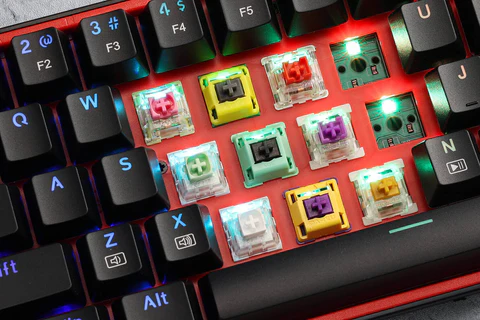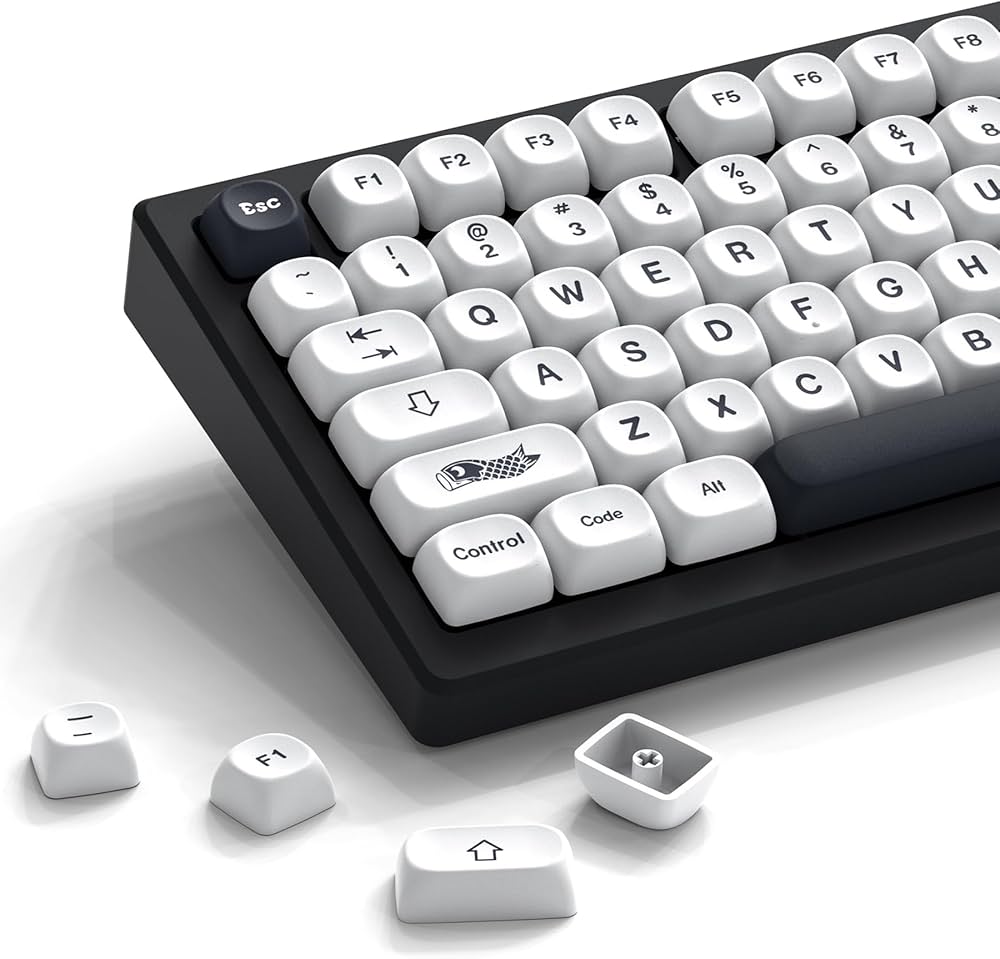
What is a Mechanical Keyboard? In the world of computer peripherals, few items have achieved the cult status that mechanical keyboards enjoy. For both enthusiasts and casual users, the tactile feel, durability, and customizable nature of mechanical keyboards set them apart from the standard membrane keyboards that come with most computers. If you’re considering upgrading your keyboard or are simply curious about the mechanics behind these devices, this guide will provide a detailed overview of what makes mechanical keyboards unique, their benefits, and what to look for when choosing one.
What is a Mechanical Keyboard?
A mechanical keyboard is a type of keyboard that uses individual mechanical switches for each key. Unlike the more common membrane or rubber-dome keyboards, which rely on a single, thin layer of membrane beneath all the keys, mechanical keyboards feature individual switches that register keystrokes with a distinct mechanism. This structure provides a more precise and satisfying typing experience, characterized by tactile feedback and a satisfying “click” sound for many models.
The Anatomy of a Mechanical Keyboard
To understand what makes mechanical keyboards different, it’s essential to know their main components:
- Switches: The heart of a mechanical keyboard is its switches. Each key has its own dedicated mechanical switch, which is why pressing one key feels different from pressing another. These switches vary widely in terms of tactile feedback, actuation force, and sound.
- Keycaps: These are the plastic tops that cover each switch and are what your fingers actually press. Keycaps come in different shapes, sizes, and materials, affecting the typing feel and aesthetic of the keyboard.
- PCB (Printed Circuit Board): The PCB connects all the switches and the rest of the keyboard components, serving as the backbone that transmits key presses to your computer.
- Plate: This component can be found between the key switches and the PCB. It adds stability to the keyboard and can affect how much flex or bounce you feel when typing.
- Stabilizers: These help larger keys (like the space bar, shift, and enter keys) stay balanced and prevent them from wobbling when pressed.
Types of Mechanical Keyboard Switches

One of the most appealing aspects of mechanical keyboards is the wide variety of switches available. These switches can be grouped into three primary types:
- Linear Switches: These switches offer a smooth, consistent keystroke from start to finish, without any tactile bump or audible click. Gamers often prefer linear switches because they allow for faster key presses. Examples include Cherry MX Red and Gateron Yellow switches.
- Tactile Switches: These switches provide a small bump partway through the keystroke, indicating that the keypress has been registered. Tactile switches are popular for typing because they provide feedback without the noise of a click. The Cherry MX Brown and Zealios V2 are well-known tactile switches.
- Clicky Switches: For those who love the sound of typing, clicky switches are a must-try. These switches offer the same tactile bump as tactile switches but add an audible click when pressed. Cherry MX Blue and Kailh Box White switches are examples of clicky switches.
Advantages of Mechanical Keyboards
Mechanical keyboards offer several advantages over their membrane counterparts, making them a favorite among gamers, writers, programmers, and anyone who spends significant time typing. Here are some of the key benefits:
1. Durability
Mechanical switches are built to last, often rated for 50 million keystrokes or more. This is a significant upgrade compared to membrane keyboards, which may wear out after just a few million presses.
2. Typing Experience
Many users find that typing on a mechanical keyboard is more comfortable and satisfying. The tactile feedback and audible clicks make it easier to know when a key has been registered, reducing the chance of missed or repeated keystrokes.
3. Customization
Mechanical keyboards can be highly customizable. From switch types to keycap designs and even programmable macros, users can create a keyboard that suits their exact preferences. Enthusiasts often swap out keycaps to create unique color schemes or to use higher-quality materials like PBT plastic.
4. N-Key Rollover and Anti-Ghosting
Mechanical keyboards frequently come with features such as N-key rollover (NKRO) and anti-ghosting, which allow for multiple simultaneous keypresses without error. This is particularly important for gamers who rely on complex key combinations.
Customization and Keycap Variety

One of the most enjoyable aspects of owning a mechanical keyboard is the ability to customize it. Keycap sets are available in an array of materials, colors, and profiles. Popular keycap profiles include:
- OEM Profile: The standard profile found on most keyboards, with a slight height difference between rows for ergonomic typing.
- Cherry Profile: A shorter profile that many users find more comfortable for long typing sessions.
- SA Profile: Known for its tall, sculpted shape, SA profile keycaps offer a retro aesthetic and a distinctive typing feel.
Building Your Own Mechanical Keyboard
For the truly dedicated, building a mechanical keyboard from scratch can be a rewarding project. This allows you to choose every component, from the case and switches to the type of PCB and plate. Custom keyboard building kits are widely available and come with varying levels of complexity, catering to both beginners and advanced builders.
Considerations When Choosing a Mechanical Keyboard
When selecting a mechanical keyboard, it’s essential to consider a few factors to make the best choice for your needs:
- Switch Type: Your preference for linear, tactile, or clicky switches will largely determine your typing experience.
- Size: Mechanical keyboards come in various sizes, from full-size (with a number pad) to 60% compact keyboards that lack function keys and arrow clusters.
- Backlighting: If you type or game in low-light conditions, RGB or single-color backlighting may be essential.
- Connectivity: Mechanical keyboards are available in wired, wireless, and Bluetooth versions. Wireless keyboards are more portable but may come with slight latency.
Conclusion
Mechanical keyboards are more than just a tool for typing; they are an experience. With their superior build quality, tactile feedback, and nearly infinite customization options, it’s no wonder they have gained a passionate following. Whether you’re a gamer looking for a competitive edge or a writer seeking a more comfortable typing experience, there’s likely a mechanical keyboard that fits your needs. As you explore the world of mechanical keyboards, you may find that the journey of discovering new switches, keycaps, and custom builds becomes just as rewarding as the final product itself.